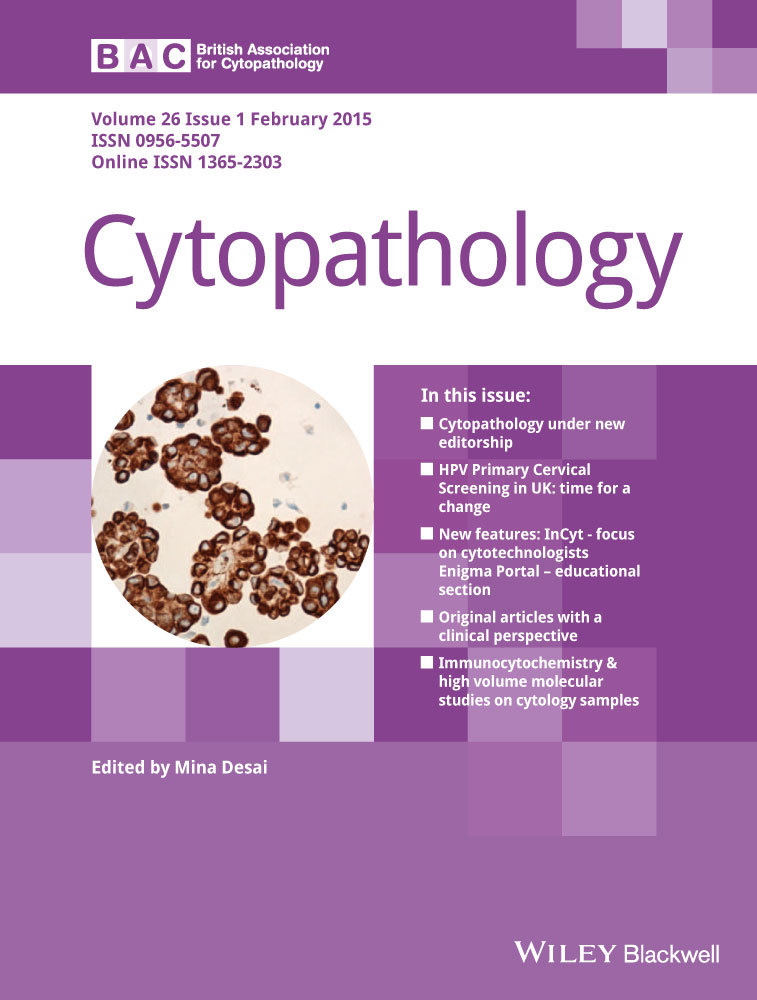Lymph node fine needle aspiration cytology in systemic mastocytosis: cytological features with ancillary tests and literature review
Abstract
Objective
Systemic mastocytosis (SM) may rarely involve the lymph nodes; the corresponding cytological features are variable and have rarely been described. The aim of this study was to define more clearly the corresponding cytological diagnostic criteria.
Methods
Ultrasound-guided fine needle aspiration (FNA) of the deep-seated lymph nodes of two men, aged 72 and 75 years respectively, was performed with rapid on-site evaluation (ROSE). Additional passes were used to prepare alcohol-fixed smears for immunocytochemistry (ICC) and cell suspensions for flow cytometry (FC).
Results
Smears showed medium-sized, roundish or elongated, mast cells with round to oval nuclei, sometimes irregular in shape. Cytoplasm was abundant with coarse granules, magenta-stained on Diff-Quik® smears. Mature lymphocytes, plasma cells, histiocytes and a variable number of eosinophils were present in the background. ICC showed mast cell positivity for CD117 in both cases; FC demonstrated CD2/CD25 co-expression in one case. On the basis of the cytological and phenotypical features, the diagnosis of lymph node involvement in SM was made in both cases. Cytological ICC and FC data were evaluated using information reported in the literature.
Conclusions
Lymph node involvement in SM may be detected by FNA and ancillary techniques successfully applied to demonstrate the mast cell phenotype. FNA may also be used in a multidisciplinary algorithm for timely and effective SM staging.




